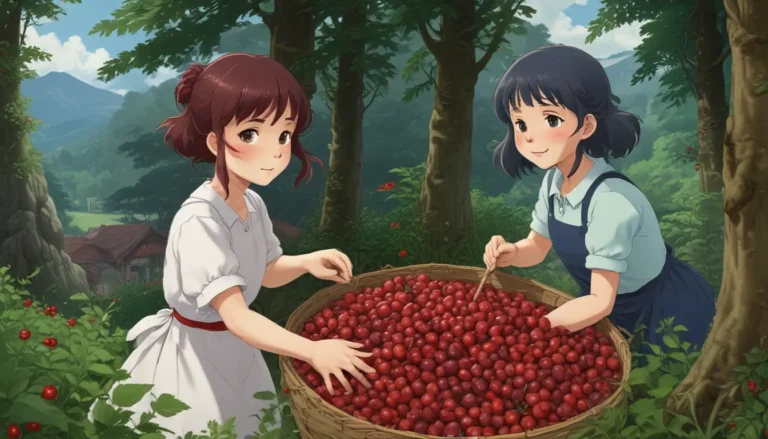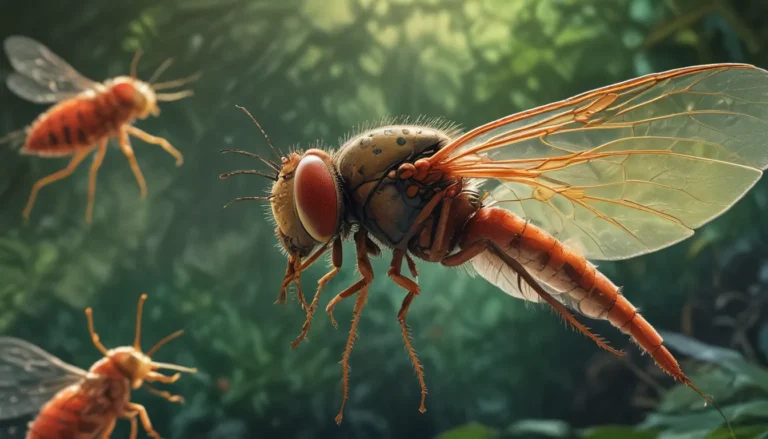The Ultimate Guide to Growing and Caring for Boneset Plants

Are you interested in delving into the enchanting world of boneset plants (Eupatorium spp.)? Join us as we provide you with all the essential information on cultivating and caring for these captivating plants in your garden.
In this detailed guide, we will take you on a journey through the origins and history of bonesets, practical advice on cultivation and propagation, and expert insights on how to ensure your boneset garden thrives.
So, let’s embark on this botanical adventure together!
Unveiling the Beauty of Bonesets
Bonesets belong to the Eupatorium genus, a diverse group of flowering plants known for their unique characteristics and charming presence in any garden. These plants are renowned for producing clusters of small, fluffy flowers on tall, sturdy stems, creating visually striking inflorescences.
As the flowers fade, they give way to small, dry fruits or seed heads, adding an intriguing element to the plant’s overall appearance. While bearing similarities to joe-pye weed (Eutrochium spp.), bonesets offer their own distinct allure to gardens and landscapes.
With approximately 60 species in the Eupatorium genus, bonesets are native to temperate regions of the Northern Hemisphere, with some species found in tropical areas as well. Among these species, E. perfoliatum, also known as American boneset, stands out as a popular choice for home gardeners.
Cultivation and Historical Significance
The Eupatorium genus traces its name back to Mithridates VI, the Persian king of Pontus from 120-63 BCE. The exact reason for associating his name with this genus remains somewhat speculative, although it is connected to his experiments with poisonous plants and concoctions like mithridate.
E. perfoliatum, commonly known as common or American boneset, holds historical significance due to its medicinal properties. Native to North America and Canada, this species has been traditionally used to alleviate fevers and cold symptoms, earning it nicknames such as feverwort and thoroughwort.
While bonesets have a reputation for being mildly toxic due to the presence of pyrrolizidine alkaloids, their medicinal qualities have made them valuable in herbal practices. However, caution is advised when exploring their medicinal uses, as further research is needed on safe dosages.
Propagating Boneset Plants
Boneset plants can be propagated through various methods, including seed sowing, cuttings, and root divisions. Each method offers unique advantages depending on the species and desired outcomes.
From Seed
To propagate bonesets from seed, collect ripe seeds from mature plants or reputable suppliers. Seeds naturally ripen about a month after flowering and should be harvested when they are dry. Sow seeds in the late fall with cold stratification or in the spring after refrigeration.
From Cuttings
Softwood cuttings root easily and can be taken in late spring or early summer. Plant cuttings in a well-draining medium, provide appropriate light and temperature, and transplant outdoors after the last frost date.
From Root Divisions
Divide mature plants in the fall or spring, ensuring each division has a bud and root cluster. Replant divisions at the same depth, water well, and monitor until established.
From Seedlings/Transplanting
Transplant seedlings into containers initially, then into the ground once mature. Space transplants accordingly to accommodate growth and ensure optimal spacing.
Cultivating Boneset Flowers
Bonesets thrive as perennials in USDA Hardiness Zones 3 to 8, preferring full sun to part shade and moist, well-drained soils. Depending on the species, they can tolerate various soil types but require consistent moisture and a slightly acidic pH.
To gauge watering needs, use the fingertip test by checking soil moisture. If dry, provide additional water to ensure optimal growth and health.
Expert Growing Tips
- Amend sandy soils with organic materials to retain water effectively.
- Plant bonesets in damp areas close to ponds or wetlands for ideal growing conditions.
- Avoid excessive fertilization, as leggy growth may occur. Apply a balanced fertilizer once in early spring to promote healthy growth.
Pruning and Maintenance Guidelines
Pruning bonesets in the fall or early spring is recommended for maintenance purposes. Deadheading is not necessary for reblooming but helps control seed spread and plant overgrowth.
Fertilization should be minimal, with caution exercised to prevent leggy growth. Prune plants in the summer before flowering to encourage abundant blooms and new growth.
Selecting Boneset Species for Your Garden
Several Eupatorium species are available to suit various gardening preferences and settings. Here are some popular species and their unique characteristics:
E. Cannabinum
- Native to Europe
- Pink flowers
- Grows up to four feet tall
- Thrives in moist, well-draining soil
- Suitable for borders, ponds, and cottage gardens
E. Perfoliatum
- Native to North America
- White flowers
- Low maintenance
- Grows up to six feet tall
- Adaptable to different conditions
E. Serotinum
- Late-blooming white flowers
- Native to North America
- Grows up to six feet tall
- Thrives in sunny to partially shaded areas
- Ideal for wildflower gardens and meadows
Pest Management and Disease Control
Boneset plants are generally resistant to pests and diseases, making them low-maintenance options for gardens. While vertebrate pests are not attracted to these plants, you may encounter insects such as flea beetles, lygus bugs, and sawflies.
Flea Beetles
- Shiny beetles that feed on foliage
- Control with mild liquid soap solutions or neem oil
- Use yellow sticky traps for additional control
Lygus Bugs
- Piercing-sucking insects that feed on plant structures
- Natural predators help control populations
- Monitor for damage and intervene as needed
Sawflies
- Leaf-feeding insects that skeletonize foliage
- Remove them manually or use neem oil solutions for control
- Reapply treatments after rain for continued protection
Harnessing the Benefits of Boneset Plants
Beyond their ornamental beauty, boneset plants offer a multitude of benefits to gardens and ecosystems. By attracting pollinators, supporting rain gardens, controlling erosion, and serving as medicinal herbs, bonesets play a vital role in landscape design and conservation efforts.
These versatile plants can be integrated into various garden settings, including borders, meadows, ponds, and herb gardens, adapting well to diverse growing conditions. Their historical significance in traditional medicine further enhances their value to gardeners and herbalists.
Conclusion: Embracing Bonesets in Your Garden
As you venture into the world of boneset plants, you’ll discover a wealth of beauty, versatility, and benefits waiting to be harnessed. Whether you’re a novice or seasoned gardener, incorporating bonesets into your landscape can elevate the aesthetic appeal and ecological value of your outdoor space.
So, why not embark on this botanical journey and witness the wonders that bonesets can bring to your garden? Share your experiences with bonesets in the comments below – we’d love to hear from you!
If you’re passionate about wildflowers, explore our related articles for more gardening inspiration:
- “15 of the Best Native Wildflowers for the US and Canada”
- “Birds, Bees, and Beauty: Tips for Growing a Native Wildflower Landscape at Home”
- “How to Grow and Care for Spotted Joe-Pye Weed”





